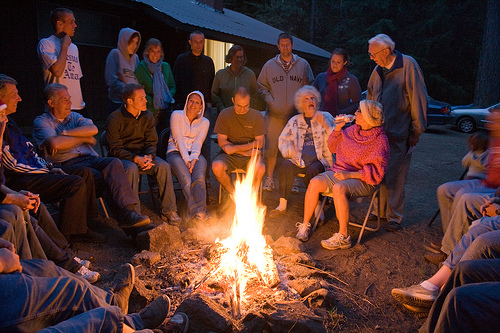‘Story-telling’ is often quoted as a way of communicating scientific ideas to non-scientific audiences. It’s seen as a way of providing a form of narrative with which an audience can relate to, and thus provide a more engaging account of a scientific report. Admittedly, not everything can be transformed into a story of sorts, but there are many aspects of science, be it theoretical, model-based, or empirical that can benefit from communication via this format.
With regards to this format of communication, it seems (in my little experience) that there are a suite of phrases that are often used somewhat interchangeably, but which have different meanings and different purposes.
Plot – Storyline, or plan of a scientific report.
Theme – The pervading subject throughout a report.
Story – An account of an event or series of events, or something that can be instructional in a broader sense.
Narrative – The telling of the story, and the manner in which it is told.
Context – The discourse that frames the report, within which it can be fully understood in relative terms.
Stories, by default, have the other four aspects as intrinsic parts of their composition. Context is similar to theme, but is the opportunity to convey the application and meaningfulness of science. Narrative and plot combine to provide the style in which the story is told, the theme of which is prevalent throughout. I think anyway – if anyone has different opinions on this, I’m happy to hear them (of course, not that that’s as important as actually going out there and doing this..)
A new(ish) paper by Jonathan Phillips seeks to find common plots that geoscientific information and research can be assigned to, and through this, be used as a basis for ‘story-telling’, with the hope that this can be used to advance both the science and the method in which geoscientists communicate it. Geoscience already has one trick up its sleeve when it comes to plot development – the historical aspect. Narratives can be more easily developed from this, as they are dealing with things that are confirmed to have already happened as opposed to trying to predict the future, or the past. But what about laboratory-based experiments, how can this be reconciled with the natural historical sequence that geoscience offers to provide a narrative?
Phillips provides a summary of eight basic plots of Earth Science, which, as categories, are by no means mutually exclusive, in that they can be blended and hybridised, are not an exhaustive list of all possibilities, and are by no means irreducible depending on the level of detail. These can, in theory, be applied to any aspect of geoscience to provide a guide and some sort of significance to results, and therefore their consideration can be invaluable to geoscientists.
- Cause and effect: Explains relationships between processes and outputs (common)
- Genesis: Origination stories (used to initiate further plots)
- Emergence: Observations as emergent properties or outcomes (alternative to ‘convergence’)
- Metamorphosis: Entire restructuring or modification (e.g., to Earth systems; different magnitude to ‘cause and effect’)
- Destruction: Loss. Degradation. Disappearance. Flamethrower optional. (A combination plot)
- Convergence: Stories of development (e.g., evolution) towards similar outcomes
- Divergence: Stories of development towards disparate outcomes
- Oscillation: Cyclical or recurring transitions (similar to ‘convergence’)
What Phillips finds most interesting about these plots is that they can alter scientific reports to yield different interpretations or implications, which isn’t quite the same as the manner in which scientific information is interpreted. What they provide though, are settings within which it may be possible to frame science, and to provide direction. They also force one to pause and think about the most fundamental question: what is it we want to communicate?
It’s a pretty cool little study, and it would certainly be interesting to see what plots emerge from similar analyses for other branches of science. Importantly, I think it demonstrates how the meta-analysis of natural sciences within a social framework can provide neat steps forward in how the overall scientific community can more effectively communicate their science, by stepping back and taking a holistic perspective on the issues of how we engage better with non-scientific audiences.


Stephanie
Cool! I am just starting to go through the (kinda)same process of telling a easy, readable story involving geoscience and natural science with my blog, so I found this article really interesting. 🙂